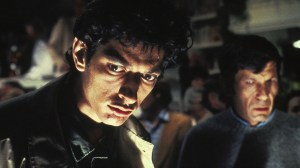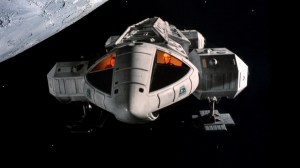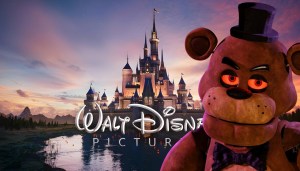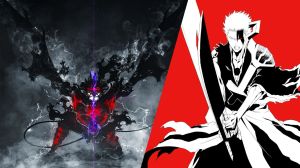Actor Joe Pantoliano recently celebrated his 50th anniversary of joining the industry, having starred in a number of iconic films like Risky Business, The Goonies, The Matrix, and Memento, with one of his more beloved characters being Captain Howard from the Bad Boys series. The actor debuted as the character in the debut 1995 film, with his character holding his own against the endlessly compelling duo of Will Smith and Martin Lawrence’s Mike Lowrey and Marcus Burnett, respectively. When fans knew that a third film, Bad Boys for Life, was finally being developed, audiences were just as excited to see the lead duo as they were to see Pantoliano return to play Howard in the trilogy’s conclusion.
Videos by ComicBook.com
The third chapter in the series brought with it the signature action and humor that audiences have grown to love in the 25 years since its debut, but also brought with it some of the heaviest emotional scenes yet, some of which hinged on Pantoliano’s performance.
ComicBook.com recently caught up with the actor to talk about the series’ longevity, highlights from his career, and the one character he’d like the chance to play for a third time.

ComicBook.com: Throughout your career, no matter how small of a role you might have, you always manage to steal every scene you’re in. One movie you were in that I’ve always wondered about is Congo, as you appear uncredited in one scene, while other actors like Delroy Lindo, Bruce Campbell, and Joe Don Baker all also have only small roles in that film. How did you wind up taking that role?
Joe Pantoliano: Well, thanks for saying say so. Frank Marshall … that was the first thing that Frank directed where he directed the whole movie. I have had a working relationship with Frank and Kathy Kennedy over the years. They were producers on The Goonies and Empire of the Sun and a big part of a working relationship was meeting them through [Steven] Spielberg. And so, when Frank asked me to be in his first feature directing job, I believe if you look at Frank Marshall’s history, theatrical history, and, at the time, movies that he worked on as the associate producer, man, he’s working his way up to being the director of this movie, which was something that I wanted to support and be a part of. But also, it was a tiny role. So we negotiated that I wouldn’t take any film credit because it was such a tiny part. I wanted to get to it for Frank and be a part of that experience for him.
I might be the only one losing sleep at night 25 years later wondering about your part in Congo.
This has happened before. When I did Sense8, I didn’t take any credit because I wanted to be a part of it. But again, it was a tiny, tiny part. So it was an opportunity for me to work with [co-creators Lana and Lilly Wachowski, who directed The Matrix] again, and still maintain a working connection with them. So any time you see me in a movie where I’m not taking credit, that’s a personal relationship.
Also in 1995 you debuted in Bad Boys as Captain Howard, and while you embraced some of the stereotypes of a gruff police chief, you brought a different sense of humor to it. Was the character always written that way or did you get to collaborate with director Michael Bay to tweak that archetype?
I got to collaborate with those guys and when I think back to those characters, “Get in my office, get out of my office!” parts, all of these kinds of police procedurals, you always have the barking captain, the Sergeant. So we wanted it to be funny, and so we found ways for it to be funny, and it evolved out of that. It’s like a blueprint for the second one and then the third one. Over 25 years we did three of these movies.
And was there always that kind of collaboration when approaching each film or was Captain Howard more solidified in the script each time, knowing what you had brought to him?
Well, it was kind of set that way, but as we worked on it, we would always improvise and I’d have ideas and we could shoot them and in between the action and cut, we change it up or you try stuff. You try stuff and then the director, either they like it or they don’t like it and they’ll say, “Okay, do that again,” or, “Don’t do that this time,” kind of thing. You’re just experimenting. You’re bringing life into it and you come up with ideas.
Like, in the last one, that scene after Will comes back to work, and he says, I think it’s after the race … I don’t want to give anything away. But we’re celebrating [Marcus’] good news. And then, there’s like a race. Then when Will finds out, he wants to get back into the field to find out who was responsible. And he comes to my office and I wanted to physicalize, I wanted to come up with, “How do I let the audience know that this is really getting to me?” That this is the last thing I want, is this guy to get involved?
So I came up with the Pepto-Bismol idea. I called the prop guy a couple of days before and I said, “Look, I want to use Pepto-Bismol. So if you can get, depending on how they’re going to shoot it, two different, three different sizes and can you make something so I can drink it and I don’t want it to be sweet.” And so he came up with this great idea and we used it and the directors liked it, Will liked it, and it became a big thing. If you create these little physical moments, it’s actual gold because it says something about who and what and how it’s going through at that moment. But also, these are memorable moments.
There had been talks of this third film for years before it finally started shooting, was there any apprehension about returning to the role after all this time?
The idea was exciting, with these new directors [Bilall Fallah and Adil El Arbi], who, I had seen their films. It was exciting. And to be around all the young guys and the youngsters, and the “AMMO Crew.” It was fun for this old bag of bones.
Obviously a lot about this film was familiar with Will and Martin back, but how was the shoot without Michael Bay directing?
Well, this is my personal feeling, is that this script, this third script was the tightest of the three. There was more on the page, so you had a clear idea of what they were going for. The filmmakers are great, [producer Jerry] Bruckheimer is great. And he’s a hands-on creative producer. Will’s company is partnering up with Jerry on this. So the idea of working for Will alongside working with Will was an exciting prospect for me. Just going back and doing a third film, I mean, I’ve done sequels before, but never going into the third one, so that was exciting.
Then to have this amazing technology. The camera was always moving around. I never knew where the camera was. It was always moving and sometimes it moved right into … It’s like sometimes I’d turn around and thought I was bumping into [the cameraperson].
When you consider when we started making the movies, 25 years ago, on film, the old traditional way, but now all the equipment has gotten so sophisticated and they’re smaller. When I started in show business, the director rehearsed the ride, sat on the camera and looked down, he relied on the camera operators, who would say, “Okay, looks good.” Then he wouldn’t see what they had until the dailies the following day. I don’t think these directors look at dailies anymore because it’s not necessary, they’re looking at the shots on these giant TV screens. They’re seeing everything that the operators are seeing. Not even what the operators are looking into it, I think, now it’s all remote controls, they’re over, sometimes 50 feet away from the camera. It’s fascinating what they’re able to do now.
Back in 2003, you starred in the early wave of superhero films as Ben Urich in Daredevil. Would you be interested in returning to the superhero world in some capacity or did you get it out of your system early on?
Hey, listen, if any role came up, I’d like to get back into it. I’m looking down the barrel of 70 years old and I just celebrated 50 years in show business. So any time that anybody’s able to get me off the couch and in front of the camera, I’m all for it.
Well I’ll make sure to let Marvel Studios know that you’re just waiting for the call.
Yeah, tell [Marvel Studios producer] Louis D’Esposito. He runs the show and we worked together when he was the second AD on Eddie and the Cruisers. Tell Louis I’m waiting for the phone to ring.
And if dressing as a superhero isn’t your thing, I think you could make a great Stan Lee.
I got the hairline for Stan Lee.
You’ve starred in so many exciting films over the years, are there any other characters you’ve played that you’d like to bring to life for another adventure?
I’d like them to do a Fugitive, U.S. Marshals sequel. Us old guys chasing a new young movie star. But also, if I may plug, I’ve got a movie coming out in June called “From the Vine,” it’s a romantic comedy that we shot in Italy a couple of years ago and I’m very, very attached to that little movie. We did the festival circuit and won like 40 awards. It’s a really, really good movie, Italian-Canadian co-production that I was lucky enough to work on. So that’ll be out in June.
*****
Bad Boys for Life is out now on Digital HD and hits 4K Ultra HD, Blu-ray, and DVD on April 21st.








